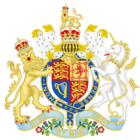Welsh Language Act 1993 facts for kids

|
|
| Long title | An Act to establish a Board having the function of promoting and facilitating the use of the Welsh language, to provide for the preparation by public bodies of schemes giving effect to the principle that in the conduct of public business and the administration of justice in Wales the English and Welsh languages should be treated on a basis of equality, to make further provision relating to the Welsh language, to repeal certain spent enactments relating to Wales, and for connected purposes. |
|---|---|
| Citation | 1993 c. 38 |
| Territorial extent | England and Wales; Scotland; Northern Ireland |
| Dates | |
| Royal assent | 21 October 1993 |
| Other legislation | |
| Amended by | Welsh Language (Wales) Measure 2011 |
|
Status: Amended
|
|
| Text of statute as originally enacted | |
| Revised text of statute as amended | |
The Welsh Language Act 1993 was an important law passed by the Parliament of the United Kingdom. Its main goal was to make the Welsh language and the English language equal in Wales. This meant they should be treated the same in official matters.
Contents
About the Act
Why the Act Was Needed
In the 1980s, a Welsh language TV channel called S4C started. Also, Welsh became a required subject in schools. These changes helped the Welsh language grow. Because of this, the Welsh Language Act was created in 1993. It aimed to make Welsh and English equal in public services and in courts.
What the Act Did
The Welsh Language Act 1993 made a key rule: Welsh and English should be treated equally in public services and justice in Wales.
This Act also created the Welsh Language Board. This Board helped public organizations treat Welsh and English equally. The Act made it a rule for public services in Wales to have a plan for using Welsh. This plan was called a "Welsh language scheme." The Welsh Language Board would check these plans. They would also give advice and make sure the plans were followed.
The Act also said that the National Assembly for Wales (now the Welsh Parliament) had to make laws in both languages. It also confirmed that people had the right to speak Welsh in court in Wales. This was something already allowed by an older law from 1967. The Act also let Welsh Ministers give Welsh names to official bodies or places. They could also create Welsh versions of certain documents.
The Act Today
Much of the Welsh Language Act 1993 is still in use. The Welsh Language Commissioner has now taken over the work of the Welsh Language Board.
How the Act Changed Things
Since the 1993 Act, all new road signs in Wales must be in both Welsh and English. Public signs in government buildings also need to be bilingual. These bilingual signs show the unique Welsh identity.
The Act has had some good results. However, some experts believe parts of the law could be stronger. For example, a lecturer from Aberystwyth University, Catrin Huws, pointed this out.
By 2008, Cardiff University found five main areas where the 1993 Act needed improvement:
- Organizations sometimes did not have enough people or money to offer Welsh services.
- Managers did not always give enough support for Welsh language use.
- Deadlines for fixing problems were not always met.
- Organizations did not always talk about their goals for using Welsh.
- The plans for using Welsh were not always checked or updated well.
Other countries have used the Welsh Language Act 1993 as a guide. For example, the Official Languages Act 2003 in Ireland and the Gaelic Language (Scotland) Act 2005 were based on it.
See also
Wales
- Welsh Courts Act 1942
- Welsh Language Act 1967
- National Assembly for Wales (Official Languages) Act 2012
- Welsh Language (Wales) Measure 2011
Other
- Irish Language Act (Northern Ireland)
- Gaelic Language (Scotland) Act 2005
- Official Languages Act 2003 (Republic of Ireland)

